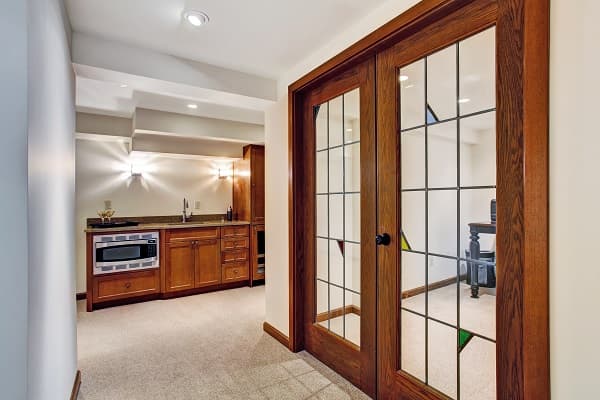Deconstruction: an eco-friendly alternative to demolition
By Editorial Team
Updated on March 21, 2024

Moving forward with a renovation project often brings to mind the idea of building rather than destroying. Of course, construction implies that a demolition must take place before a new structure can be built. However, the sheer amount of debris produced by demolitions has become a growing concern, as construction sites tend to completely neglect the recycling of materials.
As a result, some innovative companies have stepped up to the plate to tackle the growing issue of waste generated by the conversion of a building, (either partially or totally) and are proposing an ecological alternative to demolition: deconstruction. Deconstruction, also known as strip-out or selective demolition, is still in the shadows of demolition despite its recent break into the Canadian market. Luckily, our article will give this subject the attention it deserves.
A definition of deconstruction

Source: Canva
To be specific, deconstruction consists of dismantling installations or structures while making sure to preserve the materials. These materials are collected and then redirected to authorities in charge of transforming them into usable materials that can be put back on the market. When they are returned to manufacturers or stores to be sold, they’ve taken on a brand new form.
Alternatively, these materials are resold and reused in future projects. Therefore, it’s possible to say that the recycling and reusing of materials are the central objectives of deconstruction.
Construction and demolition involve many different procedures and components, and this includes manufacturing, packaging, labeling and installing. Since most building materials are made of new parts, they both effect and consume a large number of natural resources. As mentioned, the process of deconstruction offers a new source of materials which have already been through the manufacturing process. Not only does this save raw materials but it avoids energy consumption. Further, in most cases, the materials themselves move directly to the consumer and thus they require less packaging, as well as shipping and storage costs.
The myth of the non-profitability of deconstruction

Source: Canva
Although it’s true that the process of deconstruction requires more work, and thus more workers, deconstruction experts would argue that the value of the recovered and reused components offsets the additional costs generated by the need to employ more people. As Recycle-Quebec emphasizes, “the resale of the removed materials makes it possible to realize a certain profit, which is not possible when you hire demolishers and which compensates the sorting efforts.”
The amount of demolition materials sent to landfills is huge and often comparable to municipal trash collection. Therefore, the deconstruction process can cut landfill waste in half. Deconstruction works directly to cut down the present waste in landfills and this has a direct reflection on our environment. There are direct links to air quality and groundwater improvement. Even further, there is a reduction of chemicals and components found in electronic devices that find their way into the environment following a traditional demolition.
A particularly persistent myth is that the cost of processing the different materials gathered on site is higher than that of their disposal. This may be true for the processing of carpet and plastic. However, other materials (metals, gypsum board, wood pieces, doors or mineral wool) are processed at a cost comparable to their disposal.
Minimal equipment to deconstruct a building

Source: Canva
As you may be able to see, deconstruction has undeniable advantages over demolition. In specific instances, housing or offices located on upper floors may be difficult to access with heavy equipment or large machinery. The tools and devices necessary for this process are considerably less massive and will be more suitable for the realizations of high-rise or inaccessible projects.
Since only hammers, saws (circular or mechanical) or levers will be required to carry out the deconstruction process, the costs related to the equipment are much lower than those involved in a demolition project. In addition, noise and dust will be considerably less than those caused by the demolition of the room or building in question.
Lastly, one of the primary determents of traditional demolitions, as well as landfill buildup, is the methane that’s produced. Methane contributes to the thinning of the ozone layer and climate change. The requirement of heavy equipment creates greenhouse emissions. Further, many landfills use incineration to process the excess materials and this has a negative impact on air quality. By using less machinery as well as keeping excessive materials out of landfills, deconstruction is an eco-friendly process that actively contributes to saving our environment.
Get quotes for your home deconstruction project
RenoQuotes.com can help you get quotes for your deconstruction project. If you submit your project to us, we’ll put you in contact with top-rated contractors. Fill in the form on the homepage (it only takes a few minutes), and you will receive quotes from companies that are specialized in home renovations.
Dial 1-844 828-1588 to speak with one of our customer service representatives.
Looking for something else?
Related articles
The latest industry news, interviews, technologies, and resources.

Editorial Team
•17 Dec 2024
If you’re looking to let a little bit of light in between two otherwise dull or dingy rooms, or you’re looking for an alternative to the classic sliding door, then you might be in the market for French doors. These doors can be a beautiful addition to both classic and modern home décors.

Editorial Team
•07 Nov 2023
If you’re thinking about starting a home renovation project, we’re pretty sure you’re excited. Making any changes to the interior or exterior of your home is something many homeowners look forward to.

Editorial Team
•07 Nov 2023
In the middle of winter or even the early days of spring, who doesn't enjoy a long, hot shower to warm up before heading out the door? Even though a hot shower feels great, unfortunately, your bathroom doesn't share the sentiment.

Editorial Team
•07 Nov 2023
Made with plastic, vinyl first made its way onto the market in the shape of records (the infamous LP) or even as shiny items of clothing. During the 80s, this material became a popular, cushiony flooring option, vinyl sheets, or loose lay vinyl, which was also known as “cushion flooring.”

Amanda Harvey
•07 Nov 2023
When it comes to home renovation, you might want to break out the hammer and nails as soon as possible. Before you do, it’s important to consider the types of permits you might need for the project.